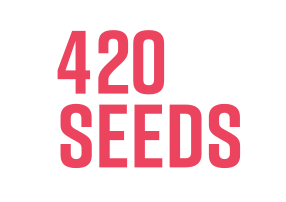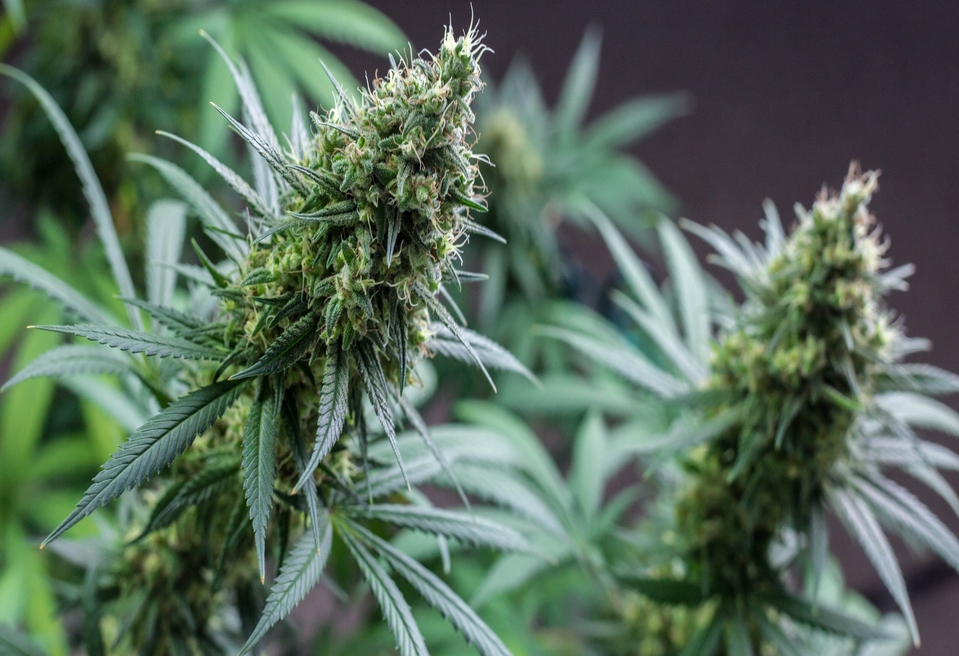When cultivating a complex plant like cannabis, it’s best to know all of its working parts. Understanding the basics of cannabis plant anatomy can help you better identify issues, and nurture its health. In doing so, you can maximize growth overall, and most importantly, yields too. That’s why we’ve put together a simple guide to the autonomy of cannabis plants for you to learn more.
Male vs. Female Cannabis Plants
The first thing every grower needs to know about cannabis anatomy relates to gender. If you didn’t know by now, cannabis plants are dioecious, meaning they can be of both sexes, male or female. For crops and buds rich in THC, like those you’re familiar with - the plant must be female. Female cannabis plants produce higher levels of cannabinoids. Male cannabis plants produce much lower levels and pollen sacs that can contain seeds.
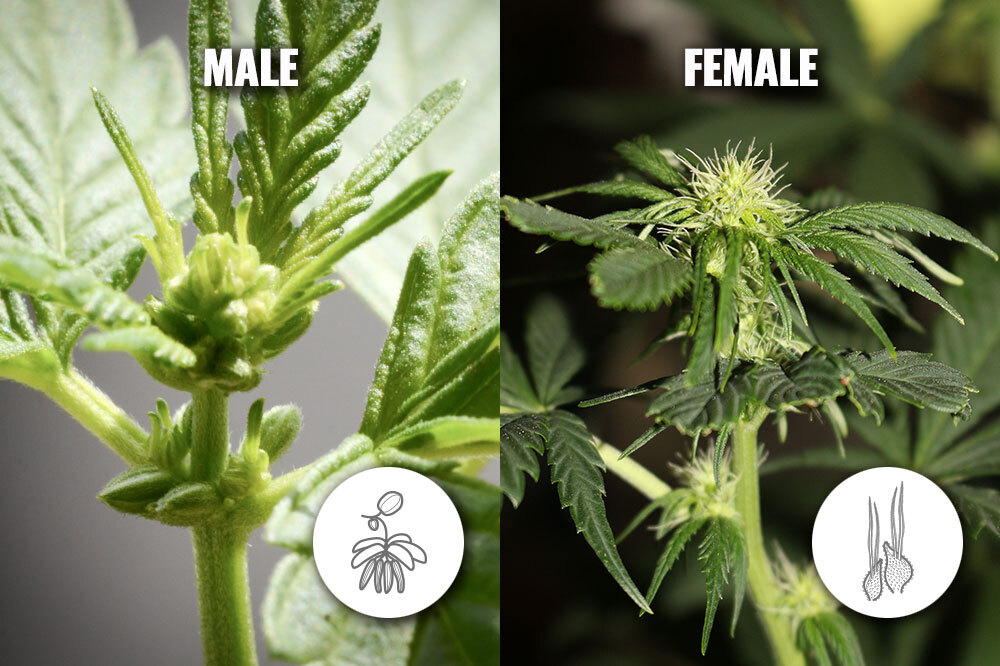
Breaking Down Cannabis Plant Anatomy
Beyond gender differences, the unique parts of a cannabis plant are just as important to know. Here’s a brief breakdown of the anatomy of a marijuana plant, and the key traits of each.
Cotyledons
Starting at the plant’s initial growth, are the first emerging signs of life. Known as Cotyledons, these serrated pairs of leaves sprout from newly germinated seeds. They’re a sign of successful germination, and contain chlorophyll for the early stages of photosynthesis. This is where plants begin absorbing nutrients and energy to grow further.
Roots
Once seeds have popped, they begin rooting. The roots serve as the base of all cannabis plant anatomy. After germination, the roots emerge with a white ‘tail’ type of appearance. They continue to grow downward forming a ‘taproot’ as the main root. From the taproot, more roots will sprout stretching throughout the medium. This creates a healthy base to pull oxygen and water into the plant.
Stems & branches
Serving as support above the medium, is the main stem or stalk of the cannabis plant. The stem grows upwards and also supports the lateral branches. It serves as a hub for foliage to perform photosynthesis, by containing xylem. Xylem is a water-carrying tissue that spans from the roots into all other areas of the plant.
Nodes & internodal
Nodes are the point where branches grow off of the main stem, or when one branch grows from another. Either fan leaves or buds can sprout from nodes, but not always from all nodes. When sexing a cannabis plant, the nodes are where to look for male or female organs. Internodal spacing is a term that classifies the distance between nodes, which indicates if a plant will be tall or short in height.
Fan Leaves
One of the most recognizable parts of a cannabis plant is the fan leaves. Sativa fan leaves are typically more slim and slender, while Indica fan leaves are broad and wide. Regardless, fan leaves work to soak up energy from the light or sun for photosynthesis to occur. They also help the plant breathe through the stomata they contain. The stomata facilitate transpiration and the uptake of CO₂.
Calyxes & bract
Calyxes form near nodes, and begin to appear between veg and bloom growth phases. Once flowering begins, you’ll find them at the base of the buds and work to protect the female reproductive organs of the plant. These organs are found in the bract, which looks like a tear-shaped leaf. The bract is coated in resin glands and is chock-full of cannabinoids.
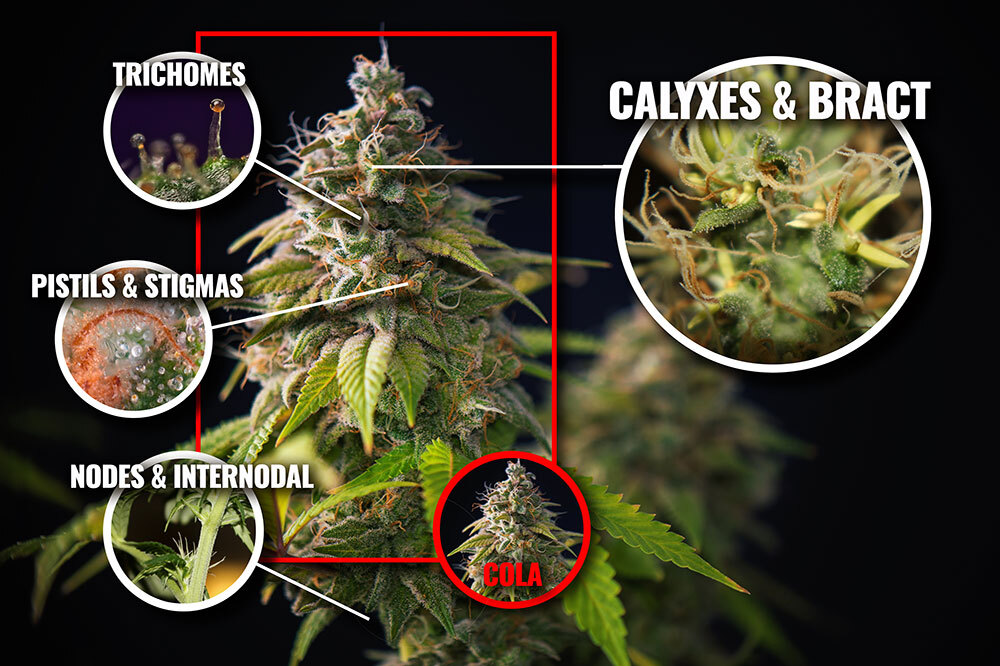
Flowers
What we know as buds are actually the flowers of cannabis plant anatomy. The flowers contain the beneficial cannabinoids and terpenes, that produce the plant’s effects, and unique aromas. Other than delivering a good buzz, function-wise, flowers serve as an attractant to pollinators.
Cola
The flowers that grow from the top of stalks, is also known as the Cola. Colas serve as bud sites, where multiple flowers grow from. The main cola, or the apical bud, grows from the top of the plant and is usually the most eye-catching. With high-stress training and low-stress training techniques, some growers can manipulate plants to produce multiple main colas.
Trichomes
On the flowers are trichomes, which contain the tiny compounds that produce marijuana’s buzz. CBD, THC, CBN, other cannabinoids, and terpenes are all produced by the trichomes. The trichomes are also one reason why cannabis plants are sticky, and shimmer upon sight. As they’re the sticky-icky, crystal-like trichomes that are synonymous with high-quality weed, too.
Sugar Leaves
Sugar leaves differ from fan leaves as they’re resin-coated (with trichomes) and buds form closely around them. During harvesting or after drying, you’ll remove sugar leaves by trimming. As they’re not as potent, as the actual buds. Sugar leaves are a common material in pre-rolls and are ideal for infusions into oils or butter for edibles.
Pistils & stigma
Pistils are the white, or multi-colored hairs that sprout from the calyx of flowering buds. From the top of the pistils are two stigmas. In reproduction, stigmas and pistils work to collect the pollen from male plants. Their color and transformation, also indicate the age and stage of growth of the plant.
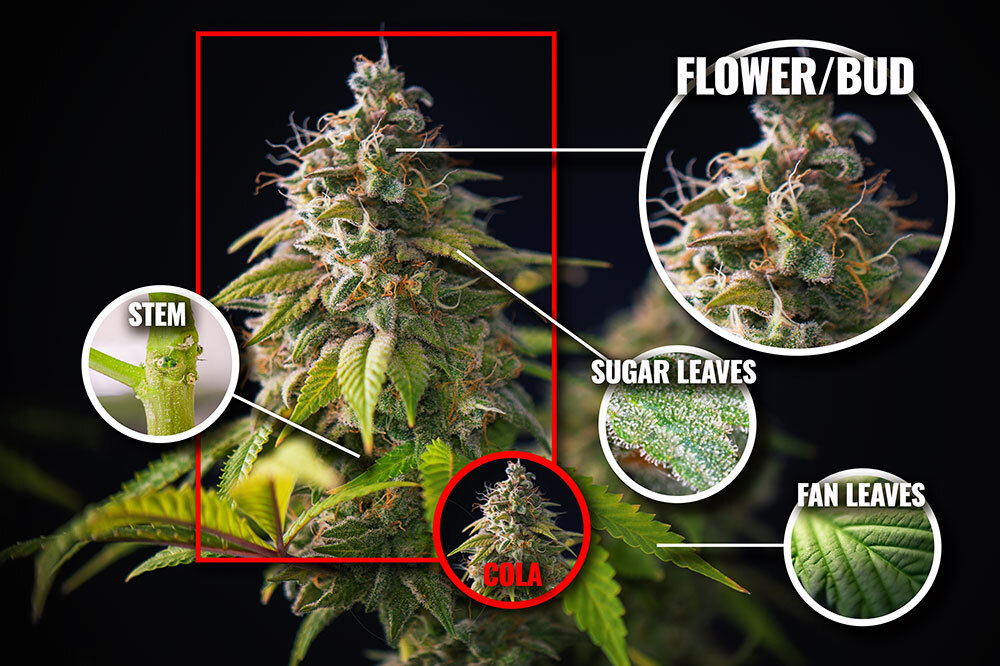
The More You Know, The Better You Grow
Now that you know about all the working parts of the cannabis plant, you can be more in tune with its overall growth, and life cycle. Each part of the marijuana plant's anatomy serves a unique purpose. Understanding these purposes can help you watch for any signs of irregular growth, and how to supplement for optimal health. To watch plant cannabis anatomy grow to its fullest, always begin with high-quality seeds. Like the premium collection at 420 Seeds that can be securely purchased, and discreetly delivered.
